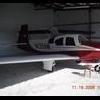Inogen
-
Members Online
- redbaron1982
- 201er
- Rmfriday
- 67 m20F chump
- PT20J
- TravelingIA98
- atpdave
- Martin S.
- MarquezJC
- Flyler
- Ron McBride
- N201MKTurbo
- aviatoreb
- Aerodon
- Yugow
- Mooney in Oz
- donkaye, MCFI
- Joe Hood
- bluehighwayflyer
- T. Peterson
- Greg Ellis
- thomas1142
- MikeOH
- Stealth Mooney
- Thedude
- kaba
- caractacuspdoom
- IvanP
- Peter T
- Rick Junkin
- raymondscott0321
- bradcarr
- kortopates
- GeeBee


Recommended Posts
Join the conversation
You can post now and register later. If you have an account, sign in now to post with your account.